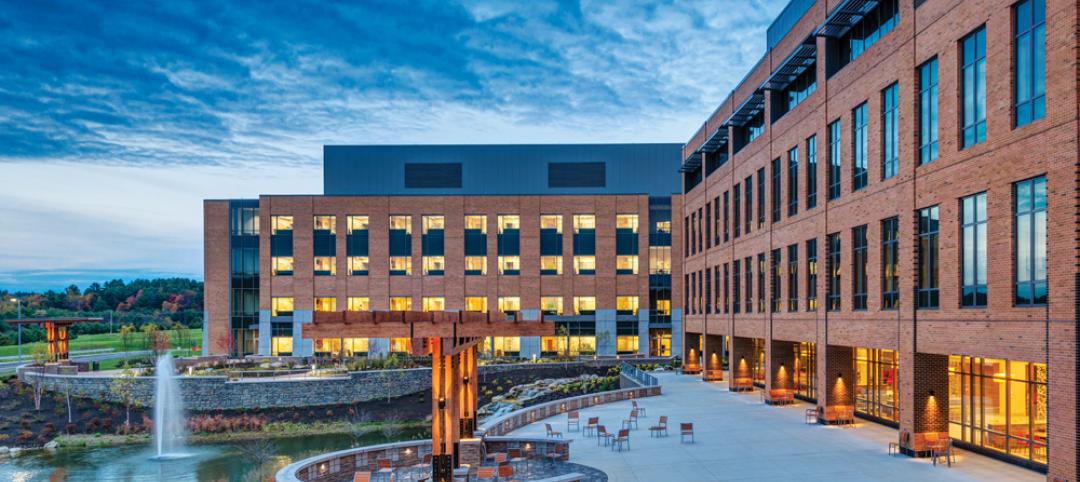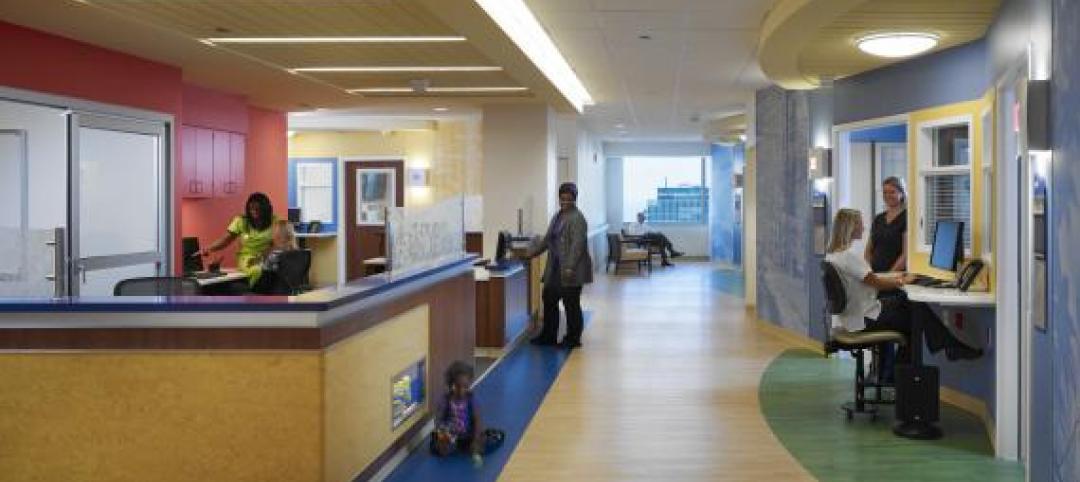The built environment has a profound impact on our natural environment, economy, health, and productivity, according to the US Green Building Council (USGBC). In the United States alone, buildings account for:
* 65% of electricity consumption
* 36% of energy use
* 40% of greenhouse gas emissions
* 30% of raw materials use
* 30% of waste output (136 million tons annually)
* 12% of potable water consumption
When you think about these statistics, it’s no wonder that a movement toward sustainability has been underway for the past 16 years. LEED (Leadership in Energy and Environmental Design), first introduced in 2000, is an ecology-oriented building certification program run under the auspices of the USGBC. LEED concentrates its efforts on improving performance across five key areas of environmental and human health: energy efficiency, indoor environmental quality, materials selection, sustainable site development and water savings.
The LEED rating is the globally accepted benchmark for the design, construction, and operation of high-performance green buildings. LEED certification provides independent, third-party verification that a building project is environmentally responsible and a healthy place to live and work.
Early adopters in the healthcare sector struggled with adapting LEED standards to the special needs of healthcare operations with limited success. Recognizing this, in 2009 the USGBC launched LEED for Healthcare, codifying in the LEED structure principles from the Green Guide for Healthcare. In 2011, LEED for Healthcare was updated and rebranded as LEED BD+C: Healthcare. This designation seeks to align the points of emphasis from the traditional LEED framework to the realities of the healthcare environment. For example, many of LEED’s Indoor Environmental Quality requirements were modified to reflect the need for infection prevention, as well as the existing code requirements for ventilation in healthcare facilities. Since its launch, over 40 different projects worldwide have met LEED criteria to be certified by the USGBC under LEED for Healthcare.
The pursuit of LEED can come with a price tag, in some cases adding a 1% to 3% premium to the overall construction budget. With tight budget constraints placed on healthcare executives, paying the additional premium to be “green” and achieving the project’s financial goals can be seen as mutually exclusive. However, when considering the triple bottom line—Pocketbook, People, and Planet—going green can be a responsible decision.
Pocketbook
Energy costs represent a large portion of healthcare expenditures. Recognizing this, over one fifth of the available LEED points are tied to energy performance gains. At a minimum, LEED requires a 10% improvement in building performance rating over the baseline case. Initially, achieving these credits can be costly. However, a payback in energy savings can be realized down the road. For example, high-efficiency chillers can cost 20% more than comparable standard units, but installing these more efficient units can result in up to a 42% reduction in the energy required for space cooling and a potential 48% savings in cooling tower use.
In addition, process water used to operate building systems such as boilers, chillers, cooling towers, and sterilizers comprises 75% of the water used at hospitals. Even modest improvements in process water efficiency (e.g. using condensate for cooling tower makeup water) can save institutions thousands of gallons of water annually.
Lighting upgrades, coupled with smart controls and increased natural lighting, can decrease electrical usage while creating an environment more conducive to healing. Recent advances in LED lighting technology have in many instances made the first cost of these fixtures equal to or less expensive than fluorescent or incandescent options.
People
Increasing connections to the natural environment and available natural light are important components of the LEED framework. A growing body of research shows positive correlation between maximizing natural light and reduced lengths of stay. Prudent owners are requesting that their designers go well beyond the code minimum requirements for clear views in order to take advantage of this correlation.
Giving patients control over their environment has been linked with better patient outcomes and higher patient satisfaction scores. Dimmable lighting systems, operable window shades, and in-room thermostats allow the in-room environment to be tailored to the particular needs of each patient. Coupled with a robust building automation system, these control points can also be used to reduce energy consumption by avoiding unnecessarily lighting or heating unoccupied spaces.
Building green can also increase staff satisfaction. Recent studies have shown a link between LEED facilities, staff comfort, and satisfaction levels. For example, a 2014 study in the Journal of Hospital Administration showed higher levels of staff engagement at the LEED Platinum Dell Children’s Hospital in Austin, Texas, compared to two other non-LEED hospitals. In addition, staff turnover decreased after moving from Dell’s predecessor into the new LEED facility.
Better indoor air quality-that is, the control of both internally generated and external pollutants-will also have a positive impact on the well-being of building occupants. Careful selection of building materials, along with proper ventilation, operation, and maintenance can improve indoor air quality. Improvements in the indoor environment of our healthcare facilities can have a profound impact on sensitive populations such as children, the elderly, and patients who are immunocompromised or have respiratory problems.
Planet
In 2009, researchers estimated that greenhouse gas emissions related to healthcare activities represented 8% of the total in the United States. More recent research has shown that the healthcare sector’s carbon footprint is growing, increasing by more than 30% over the past 10 years.
Greening both the built environment and the supply chain provides hospitals the opportunity to live up to their obligation to “first, do no harm.” By making environmentally conscious choices in the design and construction of their facilities, organizations can reduce their impact to the planet. As noted above, reduction in energy and water usage will show up on financial statements, but in considering the decision to go green administrators should weigh such non-financial measures as:
* waste diverted from landfills
* reduction in water drawn from aquifers
* reduction in wastewater discharged to local waterways
* reduction in carbon emissions from power plants, boilers, and generators
* access to green transit options, which lower the environmental impacts of staff and patient commuting
* use of sustainable building materials and products
Conclusion
As we approach the end of the second decade of LEED, the financial costs and benefits of going green are well documented. In many cases, due to increased demand for environmentally friendly products, the cost of implementing certain green strategies is negligible. However, there are still areas where green choices do not pass a purely financial test.
Fortunately, healthcare systems are not purely in the business of generating financial returns. Healthcare organizations must also care for people they encounter—patients, staff, and visitors—and the world around them. Considering the triple bottom line, pocketbook, people, and planet, gives healthcare executives additional justification for using green building strategies to advance the organization’s mission.
Related Stories
| Mar 19, 2014
How to develop a healthcare capital project using a 'true north charter'
Because healthcare projects take years to implement, developing a true north charter is essential for keeping the entire team on track and moving in the right direction.
| Mar 18, 2014
6 keys to better healthcare design
Healthcare facility planning and design experts cite six factors that Building Teams need to keep in mind on their next healthcare project.
| Mar 18, 2014
How your AEC firm can win more healthcare projects
Cutthroat competition and the vagaries of the Affordable Healthcare Act are making capital planning a more daunting task than ever. Our experts provide inside advice on how AEC firms can secure more work from hospital systems.
| Mar 13, 2014
Do you really 'always turn right'?
The first visitor center we designed was the Ernest F. Coe Visitor Center for the Everglades National Park in 1993. I remember it well for a variety of reasons, not the least of which was the ongoing dialogue we had with our retail consultant. He insisted that the gift shop be located on the right as one exited the visitor center because people “always turn right.”
| Mar 12, 2014
14 new ideas for doors and door hardware
From a high-tech classroom lockdown system to an impact-resistant wide-stile door line, BD+C editors present a collection of door and door hardware innovations.
| Feb 21, 2014
Naturally ventilated hospital planned in Singapore
The Ng Teng Fong General Hospital will take advantage of the region's prevailing breezes to cool the spaces.
| Feb 18, 2014
Study: 90% of healthcare providers say Affordable Care Act is 'step forward,' but major revisions needed
Providers are excited about opportunities to address long-term health issues in the U.S., but worries about the transition persist, according to a new study by Mortenson Construction.
| Feb 17, 2014
Lawmakers may take away control of Florida hospital project from the VA
The project is $100 million over budget and has missed its scheduled completion date.
| Feb 14, 2014
Crowdsourced Placemaking: How people will help shape architecture
The rise of mobile devices and social media, coupled with the use of advanced survey tools and interactive mapping apps, has created a powerful conduit through which Building Teams can capture real-time data on the public. For the first time, the masses can have a real say in how the built environment around them is formed—that is, if Building Teams are willing to listen.
| Feb 13, 2014
3 keys to designing freestanding emergency departments
Having physically disassociated from a central hospital, FEDs must overcome the particular challenges associated with a satellite location, namely a lack of awareness, appeal, and credibility. Gresham, Smith & Partners' Kristin Herman-Druc offers three keys to success.
















